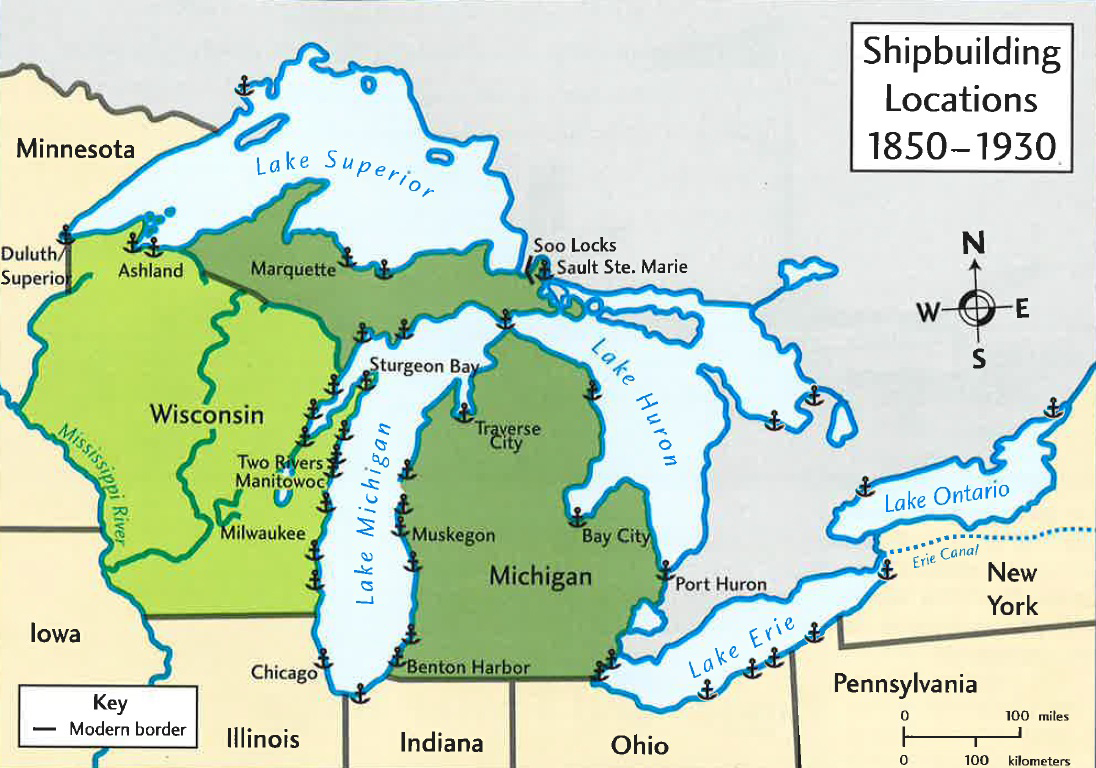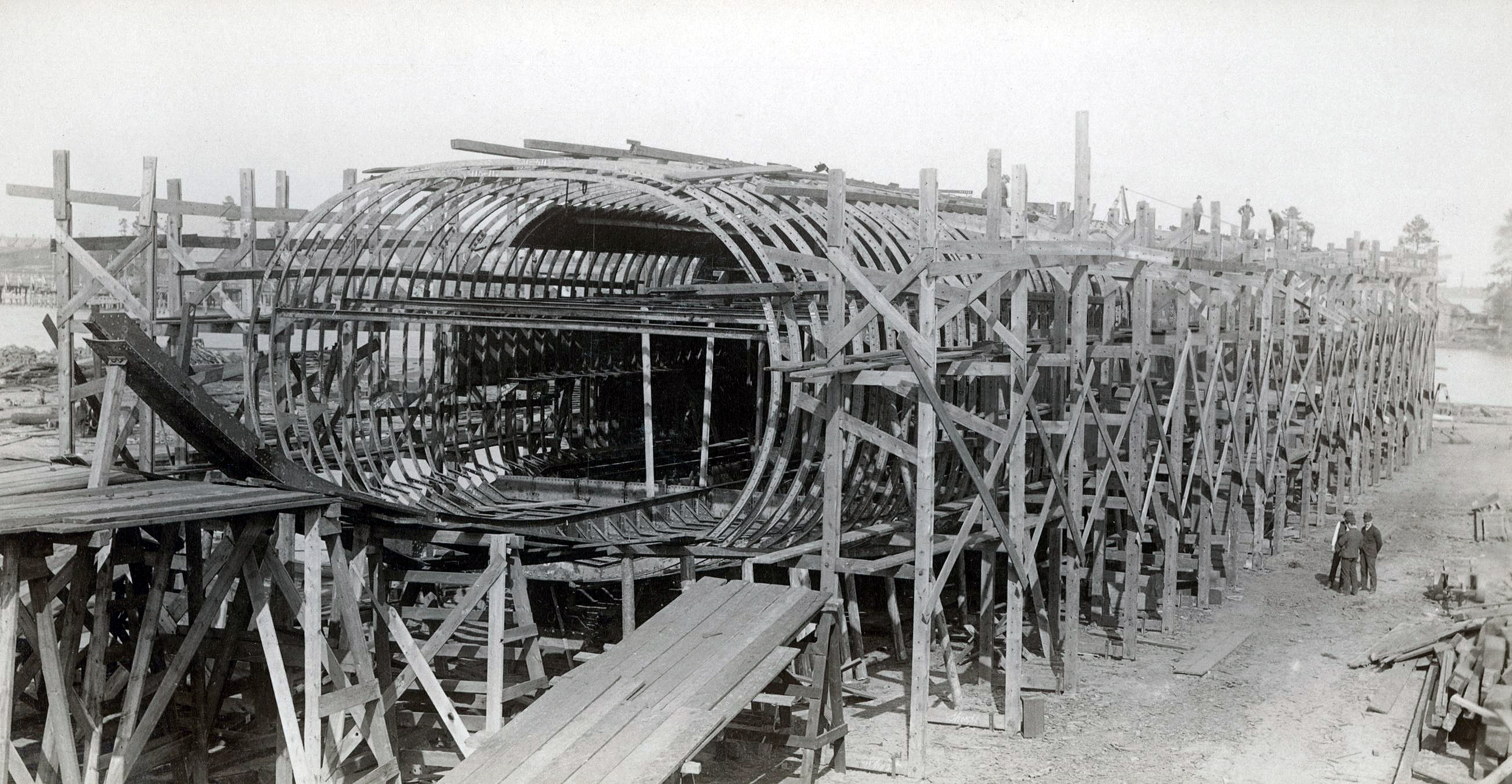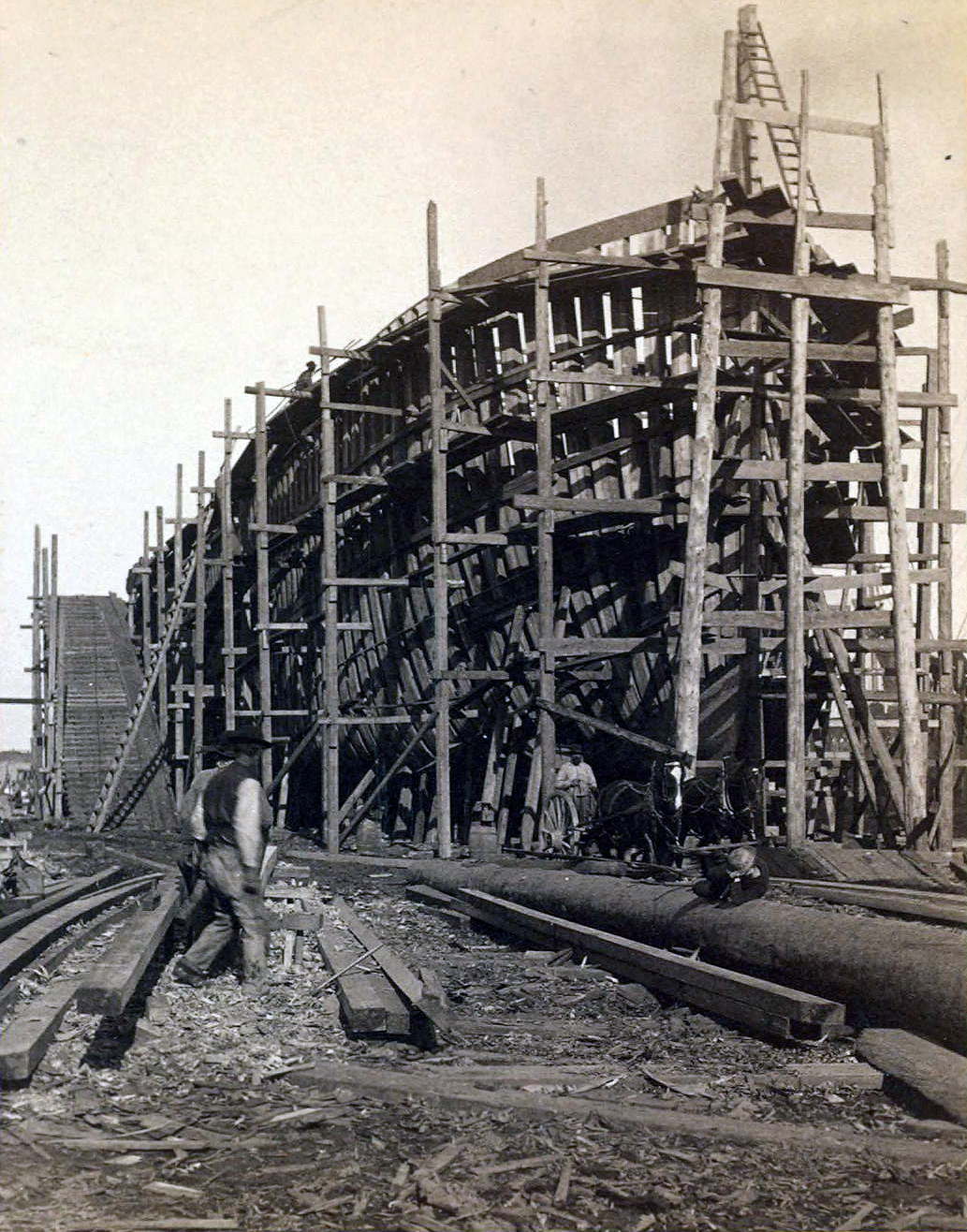
Since the launch of Le Griffon at a wilderness shipyard near the Niagara River on the Great Lakes in 1679, navigation on the inland seas had developed in several stages reflecting economic interests and activities and the technological advancements of shipbuilding. All the earliest vessels that sailed the Great Lakes were built at wilderness shipyards and were built to the then traditional European designs. The very first ship built in Wisconsin was a vessel of 40 tons built in 1739 by French Fur Trader Denis De La Ronde at La Pointe on Madeline Island. La Ronde planned to use this ship to carry the recently discovered copper in the region, but he was never able to start mining.
Over time, it was eventually realized that the fore and aft schooner rig was best suited to navigate the confined waters and shallow rivers of the Great Lakes and they grew to become the most popular vessels on the Great Lakes. Schooners were ideal for service on the Great Lakes for several reasons; first they were cheaper and easier to build and operate than traditional square-rigged ships, their sails allowed for sailors to take advantage of the shifting winds of the Great Lakes more easily than a square rigger, and since the sails on schooners were easier to handle, these vessels required fewer sailors to crew them. Great lakes vessels are built so less of the hull is underwater than the hulls of ocean-going vessels, the shallow hulls allow boats to navigate shallow rivers and harbors more safely. For these reasons schooners were also the most profitable to operate for voyages on the Great Lakes. These vessels were invaluable to the development of Wisconsin bringing people, goods and products to the frontier while also exporting Wisconsin’s rich lumber and grain resources.
Earliest shipyards were carved out of the wilderness, where the trees needed for ship construction were located right next to the shipyard. The shipyard would only be equipped with a cross-cut saw, long ship augers and large metal clamps to pull and force the wooden planks and shapes into place and hold them there for fastening. The ship’s carpenters owned and brought their own wood working tools to the shipyard. Shipyards were located along the waterfront at the right height above the water with the keel block not too far from the water’s edge so that the ship, when ready for launching, could slide down the ways by its own weight. The yard also had to be at an adequate depth of water to float the vessel. Sometimes shipyards would be located on land that was rented, where the shipbuilders only constructed one or two ships. Later shipyards would be equipped with lumber yards, sawmills, and steam for bending frames.
Milwaukee and Manitowoc were home to the very first dedicated shipyards opening in the mid-1830s. The very first large vessel was launched in Milwaukee in 1837. The very first river steamboat in Wisconsin was launched at Aztalan in 1841. Later shipyards were developed in Sheboygan in the mid-1840s. Over time 26 different shipbuilding firms operated across Wisconsin including on the Mississippi River at La Crosse and on the Fox River at Oshkosh. By the 1870s steam power began to replace sailing ships with Manitowoc producing its first steamer in 1861 and by 1900 wooden sailing ships were outdated. Iron and steel ships became the standard in the late 19th century and Manitowoc, Milwaukee and Superior became major centers of steel shipbuilding. Superior grew to be a major port for Great Lakes and a major hub for shipbuilding, producing nearly all of Alexander McDougall’s whaleback steamers at American Steel Barge Company. Wisconsin’s shipyards were tooled up for both World Wars with submarines being famously produced by Manitowoc Shipbuilding Company. Although shipbuilding declined in Wisconsin after WWII, it continues to this day at Sturgeon Bay and at Marinette.
As Great Lakes shipping became more important, it was felt that harbors, rivers and connecting waterways had to be improved to meet the needs of a growing industry and population. Lighthouses, breakwaters, lifesaving stations, piers, ore docks, railroads, shipyards, harbors and dredging were all developed to meet this growing demand.



